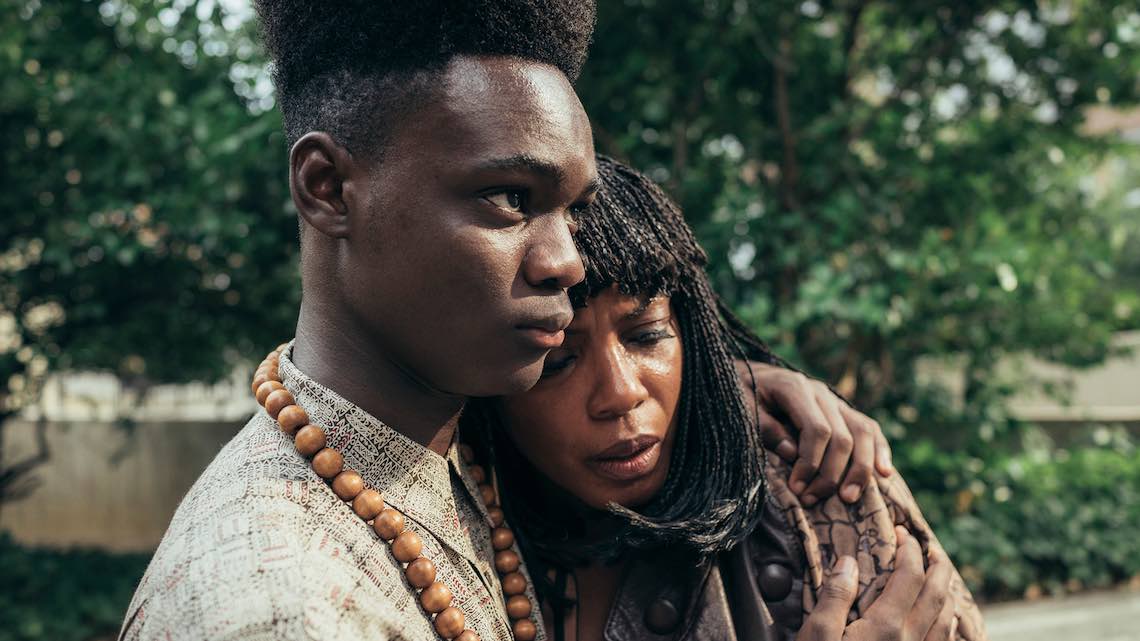Race relations around the world have never been more prominent, especially in the west, namely the USA. This is likely due to the massive increase in exposure. Thanks to social media, the rise of the digital world has allowed us to expand our awareness – for better or for worse. The world is changing, and in this current climate, it seems near impossible to be silenced. Our eyes are being opened to realities we may have never considered. Needless to say, this has had an impact on media, and in particular, Film.
A common theme in our exposure is police brutality and the general mistreatment of African Americans as a result of systematic oppression, whether this is a more discrete hint or the main focus. Social media and technology have allowed us to share and view the experiences of humanity on a global scale, despite the extremity of the images we are unsheltered from. This has given us the opportunity to be well informed as well as drawing our attention to things that were previously in the back of our minds or that we potentially weren’t aware of. Consequently, now more than ever, we see this drastic increase in films that display these racial tensions, in the most sinister ways.
This movement is no coincidence though, it reflects our social and economic climate. In terms of politics, the loss of President Obama and the introduction of Donald Trump alone is enough to stir the pot, and indeed it’s been a while since we have seen a nation at such extreme polar opposites socially.
The US has always appeared to be a melting pot of cultures and ethnicities, but to this day, people that were not white were seen as ‘other’. In spite of this, and on a positive note, this digital era has brought attention to the people of the world and highlighted the sheer fact that people of all shades can create art, and deserve respect. These people are finally getting some recognition and as a result, we’ve seen a drastic increase in diversity on screen, an exceptional amount of black and brown Filmmakers are getting into cinemas globally, which is positive in terms of inclusion and relatability- as people tend to create stories that relate to them. So, it would only be natural to think that the films we’d start seeing are actually for African Americans and Black communities, including black and brown faces in the traditional film genres. However, the reality isn’t quite as such. For me, this raises an important question: What are these filmmakers trying to achieve?
This question is notoriously important among black communities, and the division is sharp. As we all know, race relations in the US have never been smooth sailing, and the African American experience undoubtedly contrasts with the experience of the Caucasians so-called ‘American dream.’ Of course, it is essential to highlight the mistreatment of African Americans and bring awareness to movements such as Black Lives Matter. It is definitely overdue that people became aware of the history and the truth behind this lack of change. It is increasingly important to raise awareness and protect each other and ourselves. As LeVar Burton (Kunta Kinte in Roots) tweeted ‘I had to keep breathing. Episode #1 nearly broke my heart, however, I’ll keep watching. This is essential viewing for EVERY American! As essential to your understanding of America as was, ROOTS! #bydhttmwfi Bravo @ava @WhenTheySeeUs’.
This movement is real, and has been ever-present over the last 5 years, but has genuinely hit its ultimate climax during the previous 2 years with films and series such as Moonlight (2016), The Hate you give (2018), Selma (2014), Blackklansman (2018), Fruitvale station (2014), Get Out (2017), 13th (2016), When They See Us(2019) and See You Yesterday(2019). Not to mention the endless list of series, dramas and sitcoms, where we are constantly confronted with African American Suffering. This viewing may be essential, but how can we say who these films are genuinely designed for? It is possible that the intention is to give African Americans closure or a platform to speak and start a conversation, or even educate, remind and inform African American youth and communities of what happened in the past, and what can happen to them, inevitably encouraging weariness. I’m sure in part this can be true, but the phrase ‘preaching to the choir’ comes to mind. If this is the African American experience, this truth is lived, the oppressed could have no choice but to feel angry, upset and uncomfortable due to their ongoing oppression.
In this regard, it is widely believed that this movement along with the increase in films and media of this nature is targeted at the oppressors, and are yet again, intended for Eurocentric benefit – much like 99.999999% of Hollywood. Whether it be a call for all Caucasians, the government and the police to asses and alter themselves and their systems, and pity their fellow African Americans. As a call for reform. Furthermore, this could be a global movement, for people around the world to understand ongoing tensions in the USA.
Undoubtedly though, it would be unlikely for this movement to hinder the African American experience directly. Although there is the question of desensitisation. The more frequently we are exposed black suffering, the higher the possibility it becomes the norm, and the more we are seeing and hearing about black children being shot outside their homes the more it no longer shocks us, amid this, there’s the apprehension of dehumanising these people. There is a difference between spreading awareness and overexposure. It’s clear to me that filmmakers have seen a gap in the market. Potentially taking this opportunity to capitalise off of black suffering, despite the intention and this fetishisation of oppression comes at the price of African Americans representation. Commonly the nation has little interest in the true diversity and variety of African American experiences, repression or not. Comprehensively, the mainstream as we know it is rarely willing to spend their capital, and the prestigious refuses to fund and recognise anything with black and brown faces unless they’re in pain or struggling – unless its Marvel. This theory hasn’t been more apparent with movies like US and Girls Trip appearing to be nowhere near as revolutionary and exciting as movies where the protagonists are black, but the focus isn’t on their struggles. Perhaps the only apparent explanation is because these move fluidly through genres and expel stereotypes.
No one can underestimate the importance of this movement, and why African American stories need to be heard, even if just to prevent history from repeating itself. Nevertheless, I am increasingly excited for a time where African American culture in all of its forms and genres can be celebrated and displayed without the additional baggage of suffering and exploitation, and we can explore a time before colonisation. It is time to challenge filmmakers to create things designed for African Americans and stop trying to appeal to and educate a Eurocentric audience. The exhibition of the truth within black communities and individually is as rich as it’s white counterparts, and the African American culture is something worth exploring. So let us not turn a blind eye to the suffering and injustices that occur in the US, but in addition open our minds to create a larger narrative, which extends further than a trend and few inside jokes.
‘The African American Experience: Who Are These Stories For?’ is an article written by Cherilyn Roberts. You can follow Cherilyn on LinkedIn.

